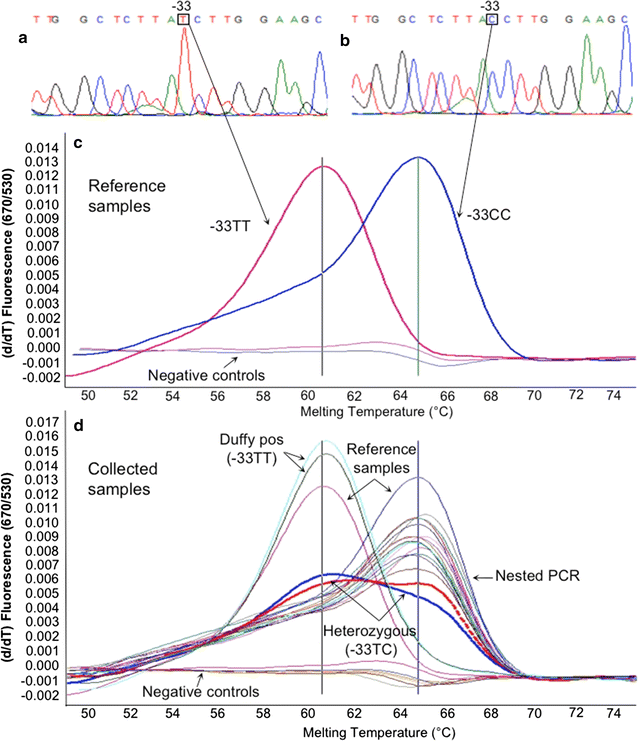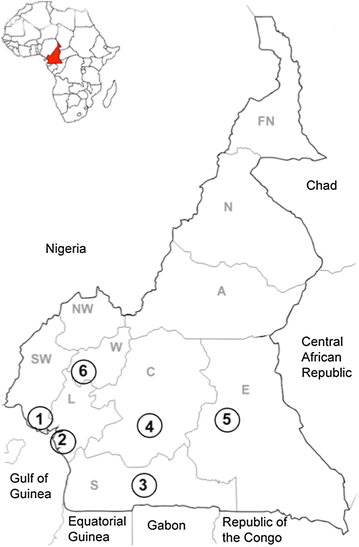Molecular evidence of Plasmodium vivax infection in Duffy negative symptomatic individuals from Dschang, West Cameroon
- PMID: 28196496
- PMCID: PMC5309988
- DOI: 10.1186/s12936-017-1722-2
Molecular evidence of Plasmodium vivax infection in Duffy negative symptomatic individuals from Dschang, West Cameroon
Abstract
Background: Plasmodium vivax infection is known to be rare in West/Central Africa, the most accepted explanation being the lack of expression of erythroid Duffy antigen in the local human populations. Duffy negativity prevents the parasite to exploit the entry mechanism on the red blood cell surface. However, there are a growing number of reported vivax infections in Duffy-negative individuals. Data on P. vivax circulation in Cameroon are limited. The aim of the study was to evaluate the P. vivax presence, and its association with the Duffy genotype in West Cameroon.
Results: Overall, 484 blood samples were collected consecutively from febrile outpatients attending the Dschang's Hospital (West Cameroon) during a 3-months period. Plasmodium vivax infection was detected by PCR in 5.6% (n = 27/484) of the cases, representing 38.6% (n = 27/70) of all Plasmodium infections detected. All P. vivax infected individuals showed a Duffy-negative genotype, and the frequency of Duffy-positive individuals in the whole tested population was 1.7%.
Conclusions: The results of this study confirm the circulation of P. vivax in Cameroon, as well as that the lack of expression of Duffy-antigen does not confer full protection against vivax malaria acquisition.
Keywords: Cameroon; Duffy antigen genotype; Malaria; Plasmodium vivax.
Figures



References
-
- WHO . World malaria report, 2015. Geneva: World Health Organization; 2015.
Publication types
MeSH terms
Substances
LinkOut - more resources
Full Text Sources
Other Literature Sources

